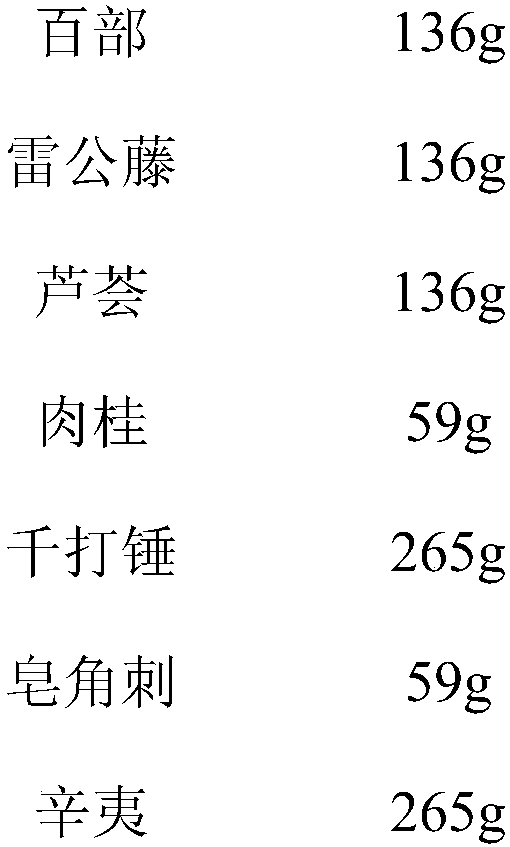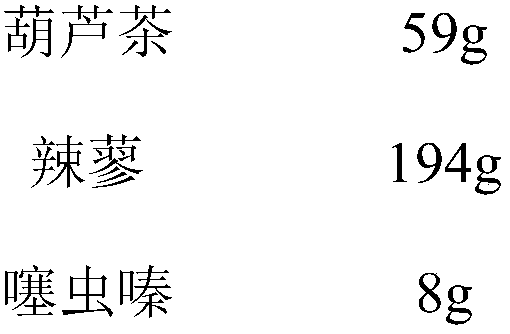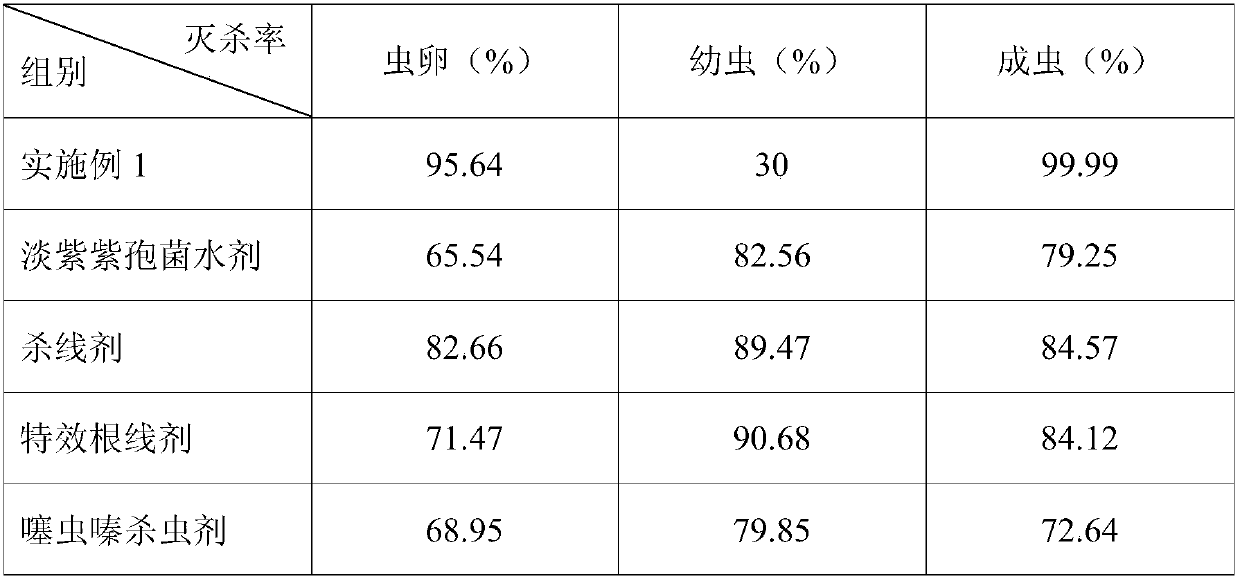Preparation method of drug composition for poisoning and killing leafhopper
A technology of composition and medicine, which is applied in the direction of botany equipment and methods, insecticides, biocides, etc., can solve the problems of insecticidal effect, such as easy occurrence of drug-resistant pests, pest resistance and differences in drug resistance, etc., which is not easy to achieve Drug resistance, no environmental toxicity, and low manufacturing cost
- Summary
- Abstract
- Description
- Claims
- Application Information
AI Technical Summary
Problems solved by technology
Method used
Image
Examples
Embodiment 1
[0023] The present embodiment provides a pharmaceutical composition for killing leafhoppers, including extracts of babubu extracts, tripterygium twig extracts, aloe extracts, cinnamon extracts, thousand hammer extracts, saponins thorn extracts, magnolia extracts, Cucurbit Tea Extract, Polygonum Capsicum Extract, and Thiamethoxam in the following quantities:
[0024]
[0025]
[0026] Its preparation method: add water to decoct babu, tripterygium wilfordii, and aloe twice, each time for 2 hours, combine the decoction, add ethanol to filter and concentrate, add 3 times the amount of water, fully stir, refrigerate for 48 hours, filter, and the filtrate is decompressed Concentrate to a relative density of about 1.8, and prepare the liquid medicine for later use; cinnamon, thousand hammers, saponins, magnolia, gourd tea, and spicy Polygonum, add water and decoct twice, each time for 1 hour, combine the decoctions, filter, and concentrate the filtrate. Let it cool, add ethanol...
Embodiment 2
[0029] This example verifies the killing rate of the medicinal composition on leafhoppers compared with common insecticides on the market.
[0030] Select the common insecticides on the market: P. lilacinus water agent, nematicide, special root thread agent, and thiamethoxam insecticide.
[0031] Grouping according to different insecticides, each group prepares 300 leafhoppers in three stages of eggs, larvae, and adults, and then uses insecticides on leafhoppers in each stage to test each group of insecticides kill rate, as shown in the table below:
[0032] Table 1 The killing effect of insecticides on leafhoppers
[0033]
[0034] It can be seen from the above table that each group of insecticides has the highest killing rate on leafhoppers in the larval state, and this product has the best insecticidal effect, and the killing effect is remarkable, even the most difficult to kill insect eggs have a good killing effect .
Embodiment 3
[0036] This example verifies the killing rate of the pharmaceutical composition on various pests.
[0037] Select 3000 leafhoppers, beetles, red spiders, borers, pear psyllids, scale insects, spodoptera, mole crickets, burdock, and wheat round spiders, and group them respectively, and use the medicine prepared in Example 1 to make the same concentration of The liquid medicine is sprayed on the pests of each group respectively, and after 1 hour, the killing rate of various pests is checked, and the results are shown in the following table:
[0038] Table 2 The killing effect of the drug on various pests
[0039] group
[0040] As can be seen from the above table, the medicine prepared in Example 1 only has a good killing effect on leafhoppers, and has a very limited killing effect on other pests. This proves that this product is highly targeted and can only be used Used to kill leafhoppers.
PUM
 Login to View More
Login to View More Abstract
Description
Claims
Application Information
 Login to View More
Login to View More - R&D
- Intellectual Property
- Life Sciences
- Materials
- Tech Scout
- Unparalleled Data Quality
- Higher Quality Content
- 60% Fewer Hallucinations
Browse by: Latest US Patents, China's latest patents, Technical Efficacy Thesaurus, Application Domain, Technology Topic, Popular Technical Reports.
© 2025 PatSnap. All rights reserved.Legal|Privacy policy|Modern Slavery Act Transparency Statement|Sitemap|About US| Contact US: help@patsnap.com



